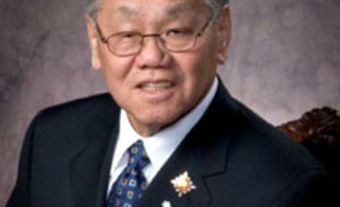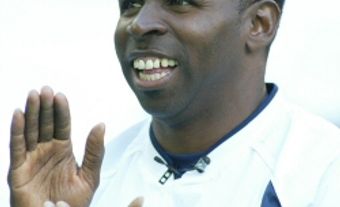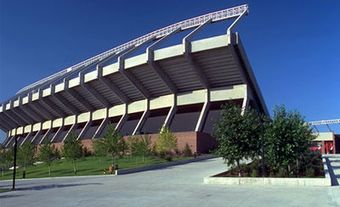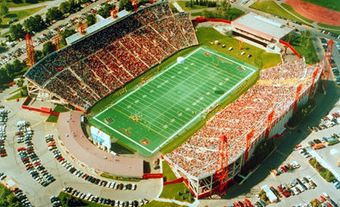John Dee Bright, football player, teacher (born 11 June 1930 in Fort Wayne, Indiana; died 14 December 1983 in Edmonton, AB). Johnny Bright was one of the most talented running backs in Canadian Football League (CFL) history. A top college player in the United States, he was severely injured during an NCAA game in 1951 in a racially motivated attack. He was drafted into the NFL in 1952 but accepted an offer from the Calgary Stampeders instead. Bright played 13 seasons (1952–64) in the CFL with the Stampeders and Edmonton Eskimos (now Edmonton Elks). He won three Grey Cups and was the first Black player to be named the CFL’s Most Outstanding Player. Bright holds Edmonton franchise records for most rushing yards in a career (9,966) and in a season (1,722 in 1958). He was inducted into the Canadian Football Hall of Fame, the US College Football Hall of Fame and the Alberta Sports Hall of Fame.

Childhood
Johnny Bright was the second oldest of five children and raised by his mother in an African-American working class neighbourhood in Fort Wayne, Indiana. He and his brothers shared two double beds in one room, while his mother and sister shared another bedroom.
At Central High School in Fort Wayne, Bright excelled at basketball, football and athletics (he also boxed and played softball). He helped his high school qualify for two Indiana State High School semifinals in basketball. He also won the 1945 Fort Wayne city championship in football and pole-vaulted 12 feet with a bamboo pole during a track and field meet.
College Career
In 1948, Johnny Bright began attending classes at Drake University in Des Moines, Iowa, on an athletics scholarship. At the time, freshman athletes in the National Collegiate Athletic Association (NCAA) were not eligible to play sports so that they could focus on their academics. In his sophomore year, Bright excelled at athletics, basketball and football. As a quarterback, he passed for 975 yards and rushed for 975 yards. Bright became the first sophomore player ever to lead the NCAA in total yards for a single season, with 1,950 yards.
In his junior year (1950), Bright decided to give up basketball and athletics to focus on football. He set an NCAA record, with 2,400 total yards of offense (1,232 yards rushing and 1,168 yards passing) and helped Drake University post a record of 6–2–1 for the second straight year.

Johnny Bright Incident
Expectations were high for Johnny Bright when he headed into his senior season at Drake University. He was considered a candidate for the Heisman Trophy, which is awarded to the most outstanding player in US college football. Over the first five games of the season, Bright had an NCAA-leading 821 rushing yards and 1,349 total yards. The Drake Bulldogs also had a perfect record of 5–0.
On 20 October 1951, Drake University played Oklahoma A&M (now known as Oklahoma State University) in a key Missouri Valley Conference battle. A win would give Drake University the conference title.
In the first seven minutes of the game, Bright received three separate hard blows to the face from Oklahoma A&M defensive tackle Wilbanks Smith (who was white). The third hit broke Bright’s jaw, forcing him to leave the game — though not until after he threw a 61-yard touchdown pass. Drake went on to lose 27–14. Meanwhile, Bright (who also suffered a concussion) had to return to Iowa for medical treatment because no Oklahoma hospital would admit a Black man in 1951.
Most people believe that the blows were racially motivated, although Smith denied it. Pictures by Des Moines Register photographers John Robinson and Don Ultang clearly show that Bright was hit far from the football action in a sequence of six photos. (They received a Pulitzer Prize for their work in 1952.) Reporter Bob Spiegel also interviewed several people who stated that they had heard an Oklahoma A&M coach and several players using racist language in reference to Bright and encouraging the attack.

“There’s no way it couldn’t have been racially motivated,” Bright later told the Des Moines Register. “Bright was the victim of one of the ugliest racial incidents in the history of American sports,” says Graham Kelly, author of Go Stamps Go! The Story of the Calgary Stampeders.
In response to the incident, the NCAA changed its rules and added a mandatory suspension for anyone who strikes another player with his forearms, elbows or locked hands. They also made it mandatory to wear protective helmets with face masks and mouth guards.
However, the Missouri Valley Conference didn’t officially reprimand Smith, leading both Drake University and Bradley University to pull out of the conference in protest. (Drake’s football team returned to the conference in 1971.) Oklahoma A&M (now Oklahoma State University) denied the incident for years but finally apologized in 2005.
Meanwhile, Bright graduated from Drake University with a Bachelor of Science in education in 1952. Although he was drafted by the NFL’s Philadelphia Eagles, he decided to join the Calgary Stampeders instead and became the first NFL top-round draft pick to opt for the CFL. The Stampeders’ offer was attractive financially, and Bright was concerned about his reception in the NFL. “I would have been the [Eagles’] first [Black] player. There was a tremendous influx of Southern players into the NFL at the time, and I didn’t know what kind of treatment I could expect.”
Calgary Stampeders (1952–54)
Johnny Bright played quarterback, fullback and linebacker for the Stampeders from 1952 to 1954. In his first year with the team, he was named a Western All-Star as a running back. That season, he led the Western Interprovincial Football Union with 815 rushing yards.
Bright injured both shoulders while playing with the Stampeders and was released in 1954. He wasn’t out of a job for long, though. He signed with the Edmonton Eskimos on 31 August 1954.
Bright Shines in Edmonton (1954–64)
In Johnny Bright’s first three seasons in Edmonton (1954–56), the Eskimos won their first three Grey Cups in franchise history. During the 1956 championship game, Bright set a Grey Cup record with 171 rushing yards. (His record stood until 2013.)
Bright played running back and linebacker in those first seasons and made the transition to full-time running back in 1957. For five consecutive seasons (1957–61), Bright hit 1,000 rushing yards and was a Western All-Star. He had a career-high 1,722 rushing yards in 1958 — a CFL single-season record at the time and an Edmonton single-season record to this day. In 1959, Bright led the CFL in rushing yards for the third straight year (1,340 yards) and was named the CFL’s Most Outstanding Player — the first Black player to win the award.
Bright holds Edmonton franchise records for career rushing yards (9,966), 100-yard rushing games in a career (36) and most 100-yard rushing games in a season (16 in 1957). Bright and George Reed also share the CFL record for most career playoff touchdowns (19).

Canadian Citizen and Teacher
Johnny Bright was approached several times to return to the US and play for the NFL but chose to stay in Canada. The pay was better in the CFL, and he had established a teaching career in Edmonton. But he also felt comfortable in Canada: “I never get into any problems up here because of my race.” In 1962, Bright became a Canadian citizen. After his CFL career ended in 1964, he became a full-time teacher and, eventually, principal at D.S. MacKenzie Junior High School and Hillcrest Junior High School, both in Edmonton.
Bright died at the University of Alberta Hospital in Edmonton in 1983, having suffered a massive heart attack during anaesthetic preparation for elective knee surgery. He was only 53 years old.
Honours
Johnny Bright’s No. 24 was added to the Edmonton Elks Wall of Honour in 1983. A school in Edmonton was named in his honour in 2010. The football field at Drake University and the school’s two-year associate program both bear his name. An hour-long documentary about Bright, The Bright Path: The Johnny Bright Story, was broadcast by CBS in 2022.
Awards
- Inductee, Canadian Football Hall of Fame(1970)
- Inductee, Alberta Sports Hall of Fame (1980)
- Inductee, US College Football Hall of Fame, National Football Foundation (1984)
- Inductee, Missouri Valley Conference Hall of Fame (2003)
- Inductee, Indiana Football Coaches Association Hall of Fame (2023)

 Share on Facebook
Share on Facebook Share on X
Share on X Share by Email
Share by Email Share on Google Classroom
Share on Google Classroom







